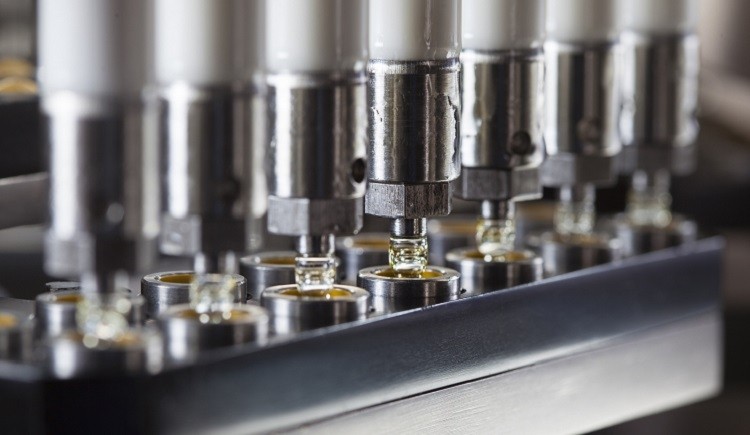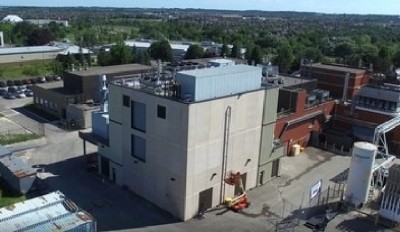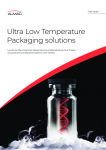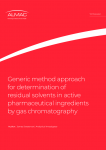CPhI Festival of Pharma
CPhI keynote tackles top trends for the CDMO sector

Gil Roth (GR), president of the Pharma and Biopharma Outsourcing Association (PBOA), is slated to deliver a keynote titled the Future of Drug Manufacturing on October 6, from 11 am to 12 noon during CPhI Festival of Pharma. Roth spoke to Outsourcing-Pharma (OSP) about trends impacting the contract manufacturing organization (CMO) and contract development and manufacturing organization (CDMO) sector, and what shifts might lie ahead.
OSP: Could you please tell us about PBOA in a nutshell—who you are, who your members are, services/products you provide, etc.
GR: PBOA is a nonprofit trade association that advocates for the regulatory, legislative, and general business interests of the CMO/CDMO sector. We have approximately three dozen member companies, covering the span of service offerings, technologies, and scale: small and large molecule therapeutics and vaccines, single facility to global multinational, pure-play to embedded models, and more; we bring those companies together to give the sector a collective voice with FDA and other regulatory bodies, and to help lobby on their behalf with the US Congress.
Having a trade association also enables these companies to talk to one another, to exchange ideas in our working groups and committees, and learn about best practices from their peers. Initiatives within our working groups have led to meetings with FDA and Health Canada, in which our members have been able to interact directly with regulators to discuss key areas of interest.
In addition, we have more than a dozen affiliate members, which are companies that provide goods or services to our full members. These include marketing companies, equipment and software providers, training companies, and trade shows.
We bring all our members together for an annual conference, giving CMO/CDMOs an event where they’re the guests, and aren’t standing at a trade show booth or otherwise pitching business. Those networking opportunities are rare for this sector, and our members greatly appreciate the show, as well as those working groups I mentioned earlier.
OSP: How has the pharmaceutical industry evolved in recent years?
GR: Gene and cell therapies (G/CT) represent a big change in drug development and patient outcomes, and those modalities apply to many different therapeutic areas. A number of CDMOs have adapted their offerings for this space; two of the largest acquisitions in the sector’s history were Thermo Fisher’s acquisition of Brammer Bio and Catalent’s acquisition of Paragon Bioservices.
Antibody-drug conjugates (ADCs) also appear to be picking up steam, after their initial arrival a few years ago. A whole suite of specialized technologies are involved in manufacturing those, and we’re seeing CDMOs — like PBOA member Piramal Pharma Solutions — build unique offerings to satisfy that market.
As far as new manufacturing technologies go, the US Food and Drug Administration (FDA) and Congress have been promoting continuous manufacturing (CM) as a means of onshoring manufacturing, while simultaneously retaining flexibility for surge capacity, reducing the environmental and personnel footprint, increasing quality and reducing the need for regulatory inspection. That's a lot of work, and sometimes CM feels like an open-ended term or a magic wand to solve manufacturing or infrastructure issues.
In reality, while there has been discrete adoption of CM, it's almost exclusively been for new products, which makes sense. Changing the manufacturing process for existing products can be time-consuming, and create regulatory headaches in multiple regions; beyond that, the cost involved with a changeover may not be justified for low-margin products.
Along with those new modalities and technologies come new business models for pharma, and those will have an impact on how they work with CDMOs. We see numerous drugs in development or reaching the market for specialty and orphan indications.
These shift production away from the traditional large batch/volume products to smaller batches or in some cases individualized treatments. That requires a different way of working with CDMOs, which historically were built around large scale production.
Similarly, we’re seeing drugs that cure long-standing diseases, rather than provide ongoing treatment, the way Sovaldi and its successors cure hepatitis-C. In that case, we see drugs that require a large manufacturing bolus, with very little “long tail” manufacturing to follow. These changes in economics will alter traditional client-CDMO agreements.
OSP: How is the CDMO landscape changing, and what might it look like in the near future?
GR: In the 20+ years I’ve been involved in this sector, we’ve seen waves of acquisitions and a variety of business models implemented by both large and small CDMOs. In fact, I was around before ‘CDMO’ was a term in our industry.
There’s been plenty of M&A activity in recent years, although that’s in a momentary lull. I will note that when PBOA started in 2014, we had twelve Founding Members (along with three General Members), and within four years, seven of those twelve founders had been acquired, while an eighth saw its acquisition fall through. Two of the others had been bought a few years earlier. That’s a lot of change.
The motivations for M&A differ from the early part of the century, when they were primarily about achieving scale. Many of today’s acquisitions are driven by niche technologies, or filling a gap in services or client-bases; that can be something like Catalent’s acquisition of Cook Pharmica, where they were able to add commercial biologic drug substance and dosage capabilities without having to build out that capacity and develop business, or the way that Cambrex added dosage and discovery chemistry capabilities to build out a sort of one-stop-shop model in small molecule services.
In addition, we see acquisitions that are the result of private equity owners looking to “cash out” of their investment in a company; these tend not to be merger-related, but instead involve a change of private ownership.
At the same time, there are always new entrants to the space, emerging from a variety of environments. PBOA has members who have been in the sector for decades, and we have one that’s currently building its first facility.
I think in the future we’ll see targeted investments in certain CDMO areas, especially in sterile injectables, where the remains plenty of demand.
OSP: How are outside forces like geopolitics, the COVID-19 pandemic, climate change and other factors impacting the industry, and pharma manufacturing specifically?
GR: Even before the pandemic, there were multiple factors at play that were causing reconsideration of existing manufacturing supply chains.
The effects of Hurricane Maria in Puerto Rico certainly was a wake-up call for some entities that weren’t aware not just of the extent of the manufacturing supply chain, but of its interconnectedness. Depending on the step, that could create robustness or fragility, and we saw several instances of drug shortages arising from the catastrophe in Puerto Rico, while others were averted by emergency approval of other manufacturing sites for drugs, as well as use of other sites for key components.
In the wake of that, we certainly played a role in educating key US Congressional staff about how supply chains work in pharma and biopharma, so they could develop more thoughtful approaches to ensuring patient access to medicine. We also worked on legislation to build a roster of “Shortage Manufacturing Establishments”, essentially pre-qualified manufacturing facilities for different dosage forms, so that if a license-holder knew it would face a supply disruption due to manufacturing facility issues, it could rapidly find a CDMO to work with to restore supply with a streamlined approval/transfer process.
By summer of 2019, the US Congress also began considering the national security implications of supply chains — especially for APIs and other key ingredients — that relied so heavily on China. While those concerns centered on the possibility of the CCP “turning off the spigot” and denying export of ingredients, they shifted in the wake of the initial COVID-19 outbreak back to the notion of having domestic capacity for the sake of safety.
We’re seeing some investments by the federal government in “reshoring” API capacity in the US, but the dosage form CDMO sector already has a much more robust presence in the US.
During the first few months of the pandemic, I received numerous calls from the media about potential shortages deriving from COVID. I canvassed my members weekly, and was surprised but cheered to discover that none of them were (confidentially) reporting product shortages due to supply disruptions.
The timelines for ingredients and other components seemed to have mitigated the short-term disruptions from China and then India. If anything, there was more concern about shortages of PPE and other gear, but those too alleviated after those first perilous months.
As far as preventing such problems in future, the Coronavirus Aid, Relief, and Economic Security (CARES) Act passed by the US Congress this spring does mandate that license-holders develop risk mitigation strategies. That said, there’s only so much risk one can mitigate. For example, one ANDA holder told me this spring that they had gotten an important ANDA approval from FDA, but their primary API supplier was based on India, which was under lockdown. As part of their risk mitigation strategy, they had set up a secondary API supplier. Problem was, it was in Italy.
So, you can develop a multi-continental network of suppliers, and we now see a situation can arise to cripple both of them. There’s no guarantee that if they had a US-based supplier that it couldn’t get affected by a natural disaster, or a personnel shortfall due to the pandemic.
I think it’s important that license-holders consider those risk factors, and do their best to work with suppliers and CDMOs to maintain continuity. At the same time, it’s also important for them to understand their limitations and inform regulatory authorities — and those manufacturing partners who may be expecting to run production in a certain timeframe —when circumstances may cause a disruption.
The CPhI Festival of Pharma takes place digitally October 5 to 16. For more information about the program or to register, go to https://www.cphi.com/festival-of-pharma/en/home.html.



















